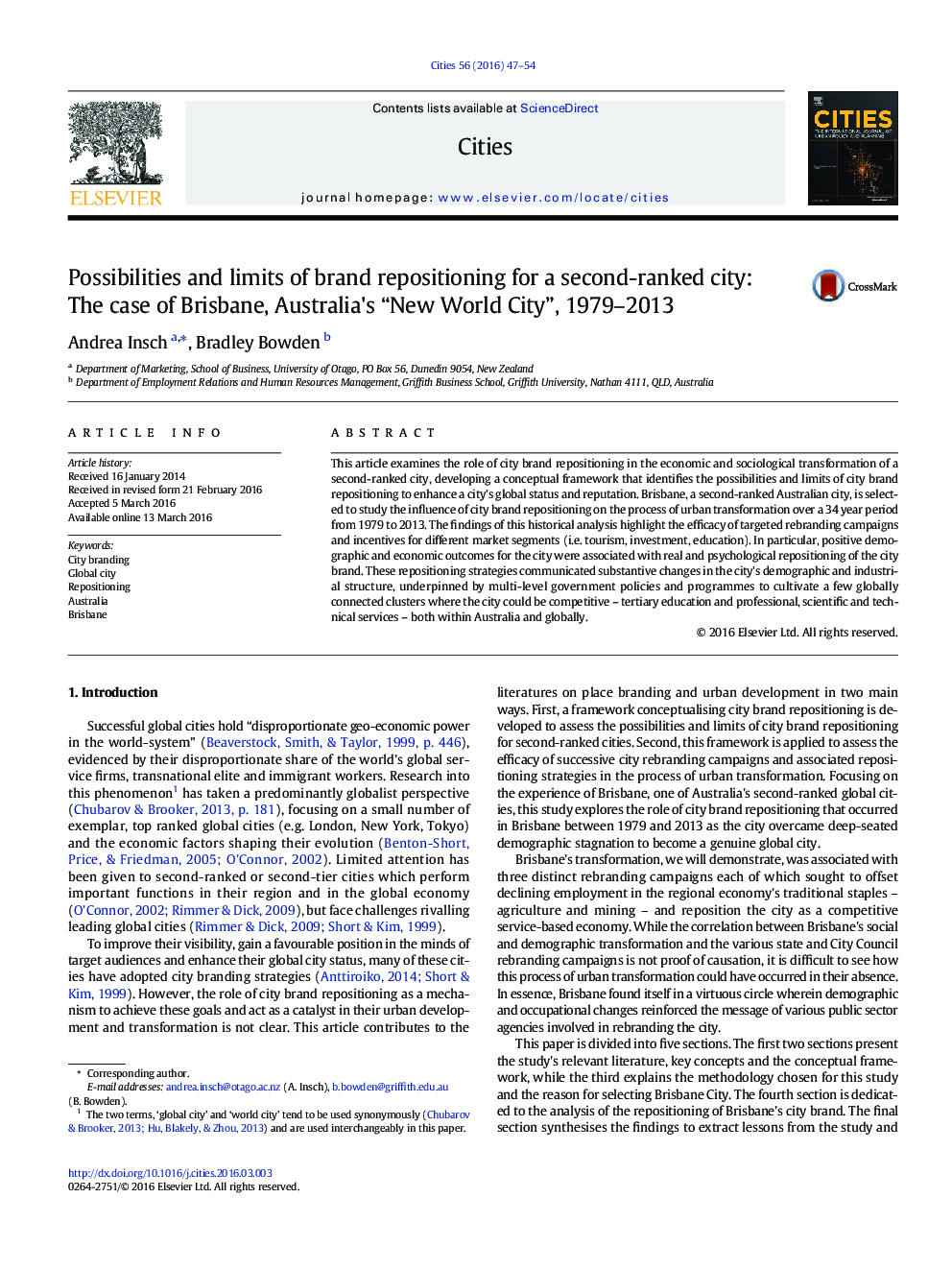| Article ID | Journal | Published Year | Pages | File Type |
|---|---|---|---|---|
| 1008187 | Cities | 2016 | 8 Pages |
•Brisbane City's brand repositioning sought to offset declining employment in agriculture and mining.•Growth of tertiary education and professional, scientific and technical services sectors reinforced Brisbane's repositioning as a global city.•Rebranding campaigns promoting specialised competitive advantage to target audiences were particularly effective.•Efficacy of the city's repositioning was associated with substantive urban change and directed state government policies.
This article examines the role of city brand repositioning in the economic and sociological transformation of a second-ranked city, developing a conceptual framework that identifies the possibilities and limits of city brand repositioning to enhance a city's global status and reputation. Brisbane, a second-ranked Australian city, is selected to study the influence of city brand repositioning on the process of urban transformation over a 34 year period from 1979 to 2013. The findings of this historical analysis highlight the efficacy of targeted rebranding campaigns and incentives for different market segments (i.e. tourism, investment, education). In particular, positive demographic and economic outcomes for the city were associated with real and psychological repositioning of the city brand. These repositioning strategies communicated substantive changes in the city's demographic and industrial structure, underpinned by multi-level government policies and programmes to cultivate a few globally connected clusters where the city could be competitive – tertiary education and professional, scientific and technical services – both within Australia and globally.
